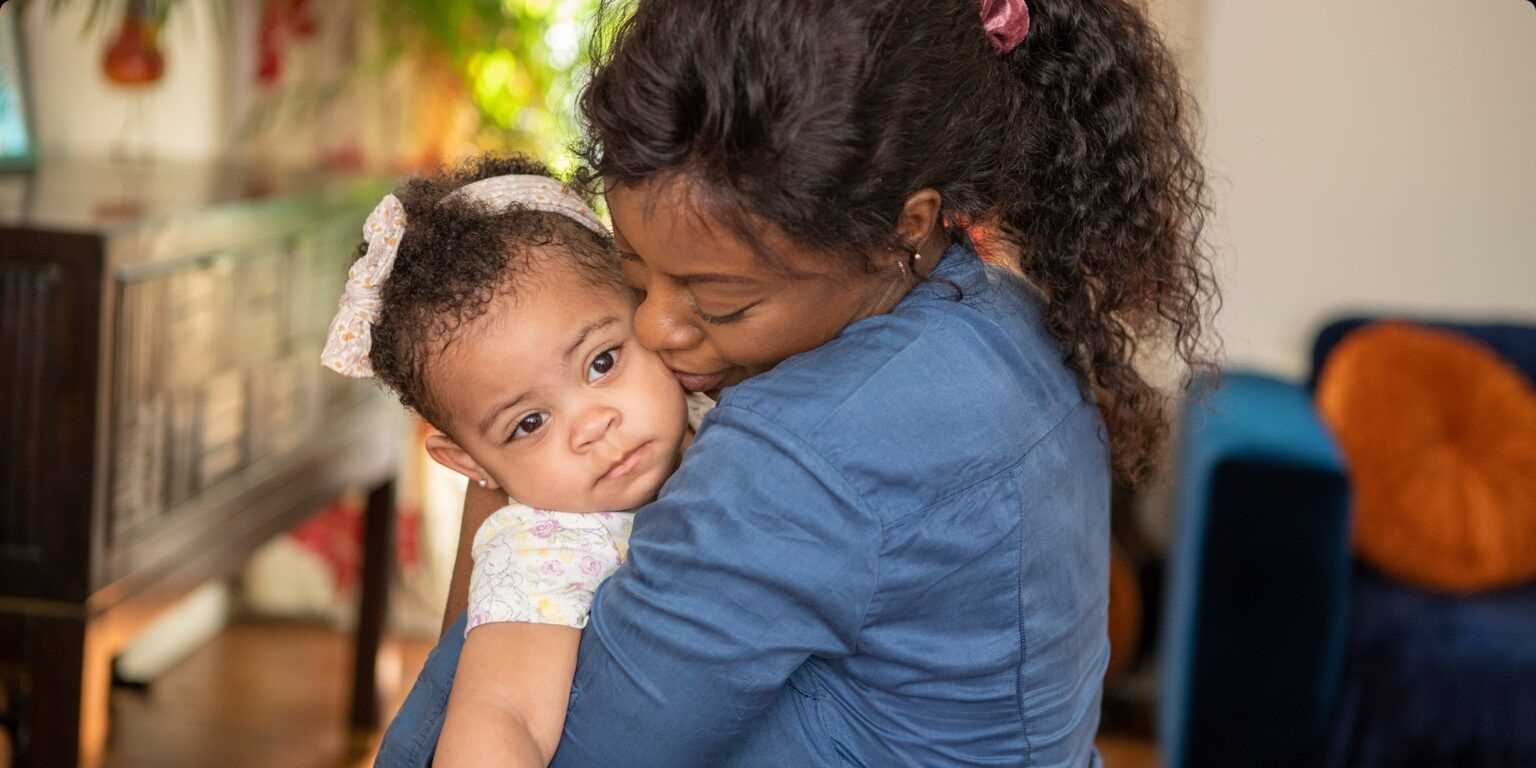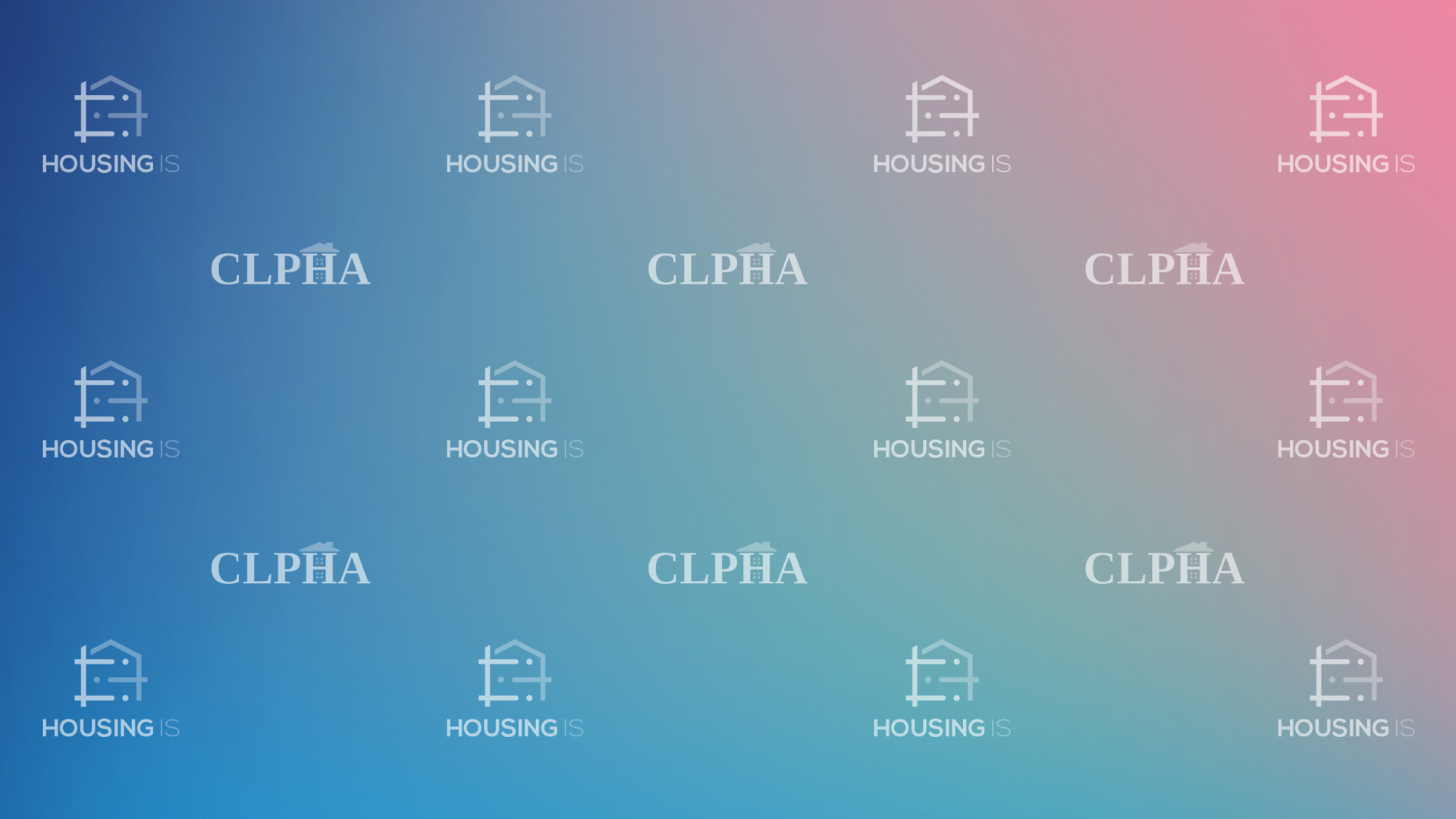0
Policy Brief
Community:
Jun 26, 2025
New America partnered with Eviction Lab to understand how eviction affects parents who are attending college while caring for children.
Authored by: Edward Conroy and Nick Graetz for New America
Topics: Homelessness, Housing, Research
 Shared by Housing Is
Shared by Housing Is
Housing Is posted a
on Jun 27, 2025
Edward Conroy and Nick Graetz for New America
New America partnered with Eviction Lab to understand how eviction affects parents who are attending college while caring for children.
0
Policy Brief
Community:
Feb 1, 2025
Wage supplements—in the form of, for example, bonuses, stipends, or tax credits—are gaining traction as ways to improve compensation in the child care and early education field. This brief explains how they can enhance retention and reduce turnover.
Authored by: Michelle Maier, Lisa Rau, Erin Bumgarner, JoAnn Hsueh & MDRC
Topics: Child welfare, Early childhood
 Shared by Housing Is
Shared by Housing Is
Housing Is posted a
on May 30, 2025
Michelle Maier, Lisa Rau, Erin Bumgarner, JoAnn Hsueh & MDRC
Wage supplements—in the form of, for example, bonuses, stipends, or tax credits—are gaining traction as ways to improve compensation in the child care and early education field. This brief explains how they can enhance retention and reduce turnover.
0
Case study
Community:
Apr 23, 2025
The Returning Citizens Stimulus (RCS) program, implemented by the Center for Employment Opportunities, provides cash assistance to formerly incarcerated individuals. An impact study in Los Angeles and Alameda counties found that RCS participants had fewer parole violations in the first year after release from prison, compared with nonparticipants.
Authored by: MDRC
Topics: Housing
 Shared by Housing Is
Shared by Housing Is
Housing Is posted a
on Apr 23, 2025
The Returning Citizens Stimulus (RCS) program, implemented by the Center for Employment Opportunities, provides cash assistance to formerly incarcerated individuals.
0
Report
Community:
Apr 16, 2025
Despite substantial financial investments in education, millions of California students continue to struggle with reading on grade level, threatening their academic success and future opportunities. But we can change this!
Families In Schools has released a new report, Bright Spots in Los Angeles: School Districts Leading the Charge to Solve the Literacy Crisis, highlighting four school districts in Los Angeles County—Bonita Unified, Garvey Elementary, Long Beach Unified, and Los Angeles Unified—demonstrating stronger literacy outcomes for their students. By shifting to structured literacy instruction, these districts are aligning classroom instruction with reading science, setting a new benchmark for literacy success.
“This is a civil rights issue. We cannot afford to let another generation of students fall behind due to ineffective literacy instruction,” said Yolie Flores, President and CEO of Families In Schools. “We hope this report inspires districts across Los Angeles and California to pursue evidence-based literacy strategies, including those shared by districts that have led to improved literacy outcomes. Now is the time for policymakers, educators, and community leaders to unite and ensure that every child—no matter their background—has access to the fundamental right of literacy.”
Authored by: Families In Schools (FIS)
Topics: Education
 Shared by Housing Is
Shared by Housing Is
Housing Is posted a
on Apr 17, 2025
Families In Schools (FIS)
Despite substantial financial investments in education, millions of California students continue to struggle with reading on grade level, threatening their academic success and future opportunities.
0
Communications
Community:
Apr 9, 2025
Every infant and toddler deserves a safe, stable, and nurturing start in life. That’s why Housing Is has joined forces with Prevent Child Abuse America, SchoolHouse Connection, and ZERO TO THREE to launch Thrive From The Start—a cross-sector effort dedicated to addressing homelessness among infants, toddlers, and expectant parents. Visit thrivefromthestart.org to learn more and explore how you can be a part of the solution.
Authored by:
Topics: Early childhood, Health, Homelessness, Housing, Pre-natal
 Shared by Housing Is
Shared by Housing Is
Housing Is posted a
on Apr 9, 2025
Every infant and toddler deserves a safe, stable, and nurturing start in life.
0
Webinar
Community:
Mar 5, 2025
The 2024 rate of U.S. homelessness increased by 18% over the previous year, with a 39% rise in families experiencing homelessness. According to an annual survey conducted in communities across the country, more than 770,000 people were living in shelters or outside—the largest number since the report was initiated in 2007. Our panelists will provide historical context for homelessness in the United States, as well as research findings on the effectiveness of various policy and practice approaches to decreasing homelessness and supporting unhoused families and individuals.
Cindy I-Fen Cheng, Robinson Edwards Professor of American History and Asian American Studies, University of Wisconsin–Madison
Katherine Levine Einstein, Associate Professor of Political Science, Boston University
David Phillips, Research Professor of Economics, Wilson Sheehan Lab for Economic Opportunities, University of Notre Dame
Authored by: The Institute for Research on Poverty (IRP)
Topics: Homelessness, Housing
 Shared by Housing Is
Shared by Housing Is
Housing Is posted a
on Mar 31, 2025
The Institute for Research on Poverty (IRP)
The 2024 rate of U.S. homelessness increased by 18% over the previous year, with a 39% rise in families experiencing homelessness.
0
Report
Community:
Mar 18, 2025
There are approximately 430 languages spoken in the United States, making this country one of the most linguistically rich nations in the world. This linguistic diversity is a strength. Indeed, decades of scientific research show that bilingualism is associated with a host of positive outcomes - cognitive, academic, economic, social, and health - for children and adults, for those from multilingual households and for those from monolingual English speaking households. Bilingualism is the norm and not the exception in most other nations. For example, while 92% of Europeans speak two or more languages, only 20% of Americans are bilingual. What’s worse, currently only about 8% of multilingual children receive dual language education, leaving mounds of unmet potential on the table and a lingering gap in the multilingual advantage that will likely grow, not shrink, between the United States and other nations. Consider these findings summarized in a recent report by the Century Foundation and the Children’s Equity Project.
Check out our latest reports on the benefits of bilingualism, equitable access to dual language education, and a guide for increasing high quality dual language education from the early years to the early grades.
Authored by: The Century Foundation and the Children’s Equity Project
Topics: Communications, Education, Racial inequalities
 Shared by Housing Is
Shared by Housing Is
Housing Is posted a
on Mar 18, 2025
The Century Foundation and the Children’s Equity Project
There are approximately 430 languages spoken in the United States, making this country one of the most linguistically rich nations in the world. This linguistic diversity is a strength.
0
Video
Community:
Mar 12, 2025
Join us to hear from Licia Villalta from the Housing Authority of the City of Los Angeles (HACLA) about how HACLA is advancing digital equity in underserved communities. HACLA is committed to bridging the digital divide through five key initiatives: Digital Ambassadors, Broadband Access, Computer Lab Renovations, Digital Lending Libraries, and Tech Career Pathways. This session will provide an overview of HACLA's work, sharing insights, successes, and lessons learned in expanding digital equity programs. Attendees will learn actionable steps to replicate these programs, from needs assessment to scaling, and understand their transformative impact on residents' education, workforce readiness, and access to technology.
Authored by: Housing Is
Topics: Broadband, Housing Is Working Group
 Shared by Housing Is
Shared by Housing Is
Housing Is posted a
on Mar 12, 2025
Join us to hear from Licia Villalta from the Housing Authority of the City of Los Angeles (HACLA) about how HACLA is advancing digital equity in underserved communities.
0
Interactive
Community:
May 24, 2023
Ever wondered what health centers are close to your public housing property? Check out this map to learn more.
Authored by:
Topics: Health, Housing
 Shared by
Shared by
posted a
on Mar 6, 2025
Ever wondered what health centers are close to your public housing property? Check out this map to learn more.
0
Video
Community:
Mar 3, 2025
There is over $4.8 billion for afterschool and summer programs in California from state and federal funds. Less than 2% of that funding goes to high school students, even though research shows that older youth benefit greatly from these programs, improving students' mental health, academic performance, safety, and well-being. This video was produced, filmed, and edited by young people from the David's Harp Foundation, a youth arts mentorship program in San Diego.
Authored by: Partnership for Children and Youth
Topics: Education, School-readiness, Youth
 Shared by Housing Is
Shared by Housing Is
Housing Is posted a
on Mar 3, 2025
Partnership for Children and Youth
There is over $4.8 billion for afterschool and summer programs in California from state and federal funds.
0
Report
Community:
Mar 3, 2025
Did you know that the Expanded Learning Opportunities Program (ELO-P) can be used to employ high school students to teach and mentor elementary and middle school students in afterschool and summer programs? This brief highlights this internship model with examples from six school districts and community-based organizations in Central, Northern, and Southern California.
Paid internships for high school students are proving effective in addressing one of the biggest challenges facing California schools: the education workforce shortage. The programs also create a powerful ripple effect in communities. High schoolers gain critical job experience, earn needed income, and develop leadership skills while being inspired to pursue careers in teaching or the expanded learning workforce. Younger students simultaneously benefit from improved instructor-to-student ratios and engaging with older mentors from their community.
Authored by: Partnership for Children and Youth
Topics: Education, School-readiness
 Shared by Housing Is
Shared by Housing Is
Housing Is posted a
on Mar 3, 2025
Partnership for Children and Youth
Did you know that the Expanded Learning Opportunities Program (ELO-P) can be used to employ high school students to teach and mentor elementary and middle school students in afterschool and summer programs?
0
Video
Community:
Feb 12, 2025
Join us for this virtual Out-of-School Time Professional Learning Community convening co-sponsored with the National Summer Learning Association. This conversation is open to past members of this learning community or brand-new interested staff. Please share this invitation with colleagues as well.
Authored by: Housing Is
Topics: Early childhood, Education
 Shared by Housing Is
Shared by Housing Is
Housing Is posted a
on Feb 12, 2025
Join us for this virtual Out-of-School Time Professional Learning Community convening co-sponsored with the National Summer Learning Association. This conversation is open to past members of this learning community or brand-new interested staff.
0
Policy Brief
Community:
Jan 20, 2025
A safe, stable place to live is a key ingredient for a child’s healthy physical, emotional and cognitive development. Research shows children’s well-being is intricately connected to their home environments. However, many families across the United States face housing instability, which poses significant risks to children and their families according to a study published in 2024. Housing instability encompasses a range of issues, including difficulties paying rent or a mortgage, overcrowding, frequent relocations, eviction and homelessness. Linking housing policy with prevention strategies can help states to reduce unnecessary child welfare system involvement, support reunification and prevent maltreatment—ultimately ensuring that children can remain safe and supported within their families. Read more in “Strengthening Families Through Housing Stability,” the newest issue brief from the National Conference of State Legislatures (NCSL) here.
Authored by: National Conference of State Legislatures (NCSL)
Topics: Advocacy, Data sharing, Housing
 Shared by Housing Is
Shared by Housing Is
Housing Is posted a
on Jan 29, 2025
National Conference of State Legislatures (NCSL)
A safe, stable place to live is a key ingredient for a child’s healthy physical, emotional and cognitive development. Research shows children’s well-being is intricately connected to their home environments.
0
Policy Brief
Community:
Jan 15, 2025
The Children’s Partnership’s newly released policy brief, “Uplifting the Power of Culture: Protective Factors for the Health of California’s Children,” emphasizes how culturally grounded protective factors in early childhood can create equitable pathways to health and success for BIPOC children. By centering these factors in early childhood programs, California can help ensure that all children—especially those from marginalized communities—have the support they need to thrive. Access the brief here.
Authored by: Children’s Partnership
Topics: Child welfare, Data sharing, Research
 Shared by Housing Is
Shared by Housing Is
Housing Is posted a
on Jan 29, 2025
The Children’s Partnership’s newly released policy brief, “Uplifting the Power of Culture: Protective Factors for the Health of California’s Children,” emphasizes how culturally grounded protective factors in early childhood can create equitable pathways to health and success for BIPOC children.
0
News Article
Community:
Jan 14, 2025
The Help Me Grow National Center (HMG) conducted a year-long Goal Concordant Care Study to explore how aligning early childhood system support with families’ goals can not only prevent negative outcomes for young children, but also help them thrive. HMG Orange County, California was one of three HMG systems in the study that tested the impact of integrating motivational interviewing as a strategy to elicit, document and share parent’s goals as a systematic enhancement to their HMG Centralized Access Point work. In this new blog post, HMG Orange County provides an inside look at their experience testing motivational interviewing, the challenges they encountered along the way and the impact this work has had on their support to families with young children. Read the blog here, and share.
Authored by: Help Me Grow National Center (HMG)
Topics: Advocacy, Data sharing, Research
 Shared by Housing Is
Shared by Housing Is
Housing Is posted a
on Jan 29, 2025
Help Me Grow National Center (HMG)
The Help Me Grow National Center (HMG) conducted a year-long Goal Concordant Care Study to explore how aligning early childhood system support with families’ goals can not only prevent negative outcomes for young children, but also help them thrive.
0
News Article
Community:
Jan 15, 2025
Chapin Hall developed a new strategic framework “Meeting Family Needs: A Multi-System Framework for Family and Child Wellbeing.” The framework stands as an essential tool to help develop an integrated and holistic child and family well-being system which supports families facing adversity and empowers them to thrive. It provides both a vision of this system, and practical steps to get there, along with dozens of programmatic examples from across the country, descriptions of approaches toward applying the framework and a complete list of references. Find it here.
Authored by: Chapin Hall
Topics: Data sharing
 Shared by Housing Is
Shared by Housing Is
Housing Is posted a
on Jan 29, 2025
Chapin Hall developed a new strategic framework “Meeting Family Needs: A Multi-System Framework for Family and Child Wellbeing.” The framework stands as an essential tool to help develop an integrated and holistic child and family well-being system which supports families facing adversity and empowe
0
News Article
Community:
Jan 15, 2025
The Center for American Progress (CAP) is sharing three new fact sheets for 2025 in its ongoing series, “A Guide to Workplace Leave Laws in the United States.” These 2025 editions provide an overview of the state of play at the local, state and federal levels. The CAP resources are as follows below:
Authored by: Center for American Progress (CAP)
Topics: Research
 Shared by Housing Is
Shared by Housing Is
Housing Is posted a
on Jan 29, 2025
Center for American Progress (CAP)
The Center for American Progress (CAP) is sharing three new fact sheets for 2025 in its ongoing series, “A Guide to Workplace Leave Laws in the United States.” These 2025 editions provide an overview of the state of play at the local, state and federal levels.
0
Research
Community:
Jan 29, 2025
A fact sheet from the National Partnership for Women & Families, “Paid Leave Means A Stronger Nation,” reports that most working people in the United States–73 percent, or 106 million people nationwide–do not have paid family leave through their jobs. Just 14 states have their own paid family and medical leave programs. For working people everywhere else, the lack of paid leave exacerbates other economic and care challenges to public health and our economy including the rising cost of living and a scarcity of reproductive and maternal healthcare. The report highlights that if women participated in the U.S. labor force at the same rate as in countries with national paid leave and other family policies, the economy would benefit from more than $775 billion in additional economic activity annually. View the fact sheet here.
Authored by: National Partnership for Women & Families
Topics: Data sharing, Research
 Shared by Housing Is
Shared by Housing Is
Housing Is posted a
on Jan 29, 2025
National Partnership for Women & Families
A fact sheet from the National Partnership for Women & Families, “Paid Leave Means A Stronger Nation,” reports that most working people in the United States–73 percent, or 106 million people nationwide–do not have paid family leave through their jobs.
0
Report
Community:
Jan 15, 2025
The Georgetown University Center for Children and Families (CCF) has released a revealing new report on Medicaid in rural areas and small towns. CCF updated its semi-annual rural analysis to show Medicaid's reach in rural areas, which is not always well understood. For your review, a copy of the full report is provided here, and a link to the recording of a recent webinar on the topic can be found here. If you are not up on the current debate on potential Medicaid cuts, this webinar and report are definitely important to listen to and read.
Authored by: The Georgetown University Center for Children and Families (CCF)
Topics: Medicaid / Medicare, Research
 Shared by Housing Is
Shared by Housing Is
Housing Is posted a
on Jan 29, 2025
The Georgetown University Center for Children and Families (CCF)
The Georgetown University Center for Children and Families (CCF) has released a revealing new report on Medicaid in rural areas and small towns. CCF updated its semi-annual rural analysis to show Medicaid's reach in rural areas, which is not always well understood.
0
Report
Community:
Jan 9, 2025
One of the most cherished founding principles of the United States, equal opportunity for all, is one that has yet to be fully realized for too many Americans. Mountains of data, most recently summarized in a consensus report of the National Academies of Sciences, Engineering, and Medicine (2023), show us the many ways that opportunity continues to be uneven and unfair, from birth, impacting historically marginalized communities. For over sixty years, born from the Civil Rights Movement, the federal government has funded local communities to build opportunity and bridge gaps in opportunity across the nation, starting with our youngest children. From Head Start to Title I and IDEA, to investments that address hunger, homelessness, and access to quality healthcare, these investments deeply impact the lives of millions of children and families in every state in the nation and contribute to healthy, safe, thriving children, families, and communities. This report outlines key programs that play a vital role in communities and families to nurture healthy child development and promote quality education and learning. We highlight research that demonstrates programs’ constructive impacts and the consequences of reducing or eliminating funding, transparency, and oversight.
Authored by: Bucher, E., Meek, S., Cardona, M., Alexander, B., Soto-Boykin, X., Catherine, E., Williams, C., Jayswal, P., Allen, R.
Topics: Advocacy, Early childhood, Education
 Shared by Housing Is
Shared by Housing Is
Housing Is posted a
on Jan 9, 2025
Bucher, E., Meek, S., Cardona, M., Alexander, B., Soto-Boykin, X., Catherine, E., Williams, C., Jayswal, P., Allen, R.
One of the most cherished founding principles of the United States, equal opportunity for all, is one that has yet to be fully realized for too many Americans.
0
Video
Community:
Dec 16, 2024
Hear from the Corporation of Supportive Housing on ways and supports to use Medicaid resources on topics such as understanding all components of billing Medicaid for intensive supportive housing case management, and staffing and budgeting training. This will be of particular interest for California, Washington State, and the District of Columbia PHAs and their partners, but all are welcome to learn more about what can be achieved in your community.
Authored by: Housing Is Working Group
Topics: Health, Housing, Housing Is Working Group, Medicaid / Medicare
 Shared by Housing Is
Shared by Housing Is
Housing Is posted a
on Dec 16, 2024
Hear from the Corporation of Supportive Housing on ways and supports to use Medicaid resources on topics such as understanding all components of billing Medicaid for intensive supportive housing case management, and staffing and budgeting training.
0
Webinar
Community:
Oct 1, 2024
Authored by:
Topics: Housing Is Working Group
 Shared by Kirsten Greenwell
Shared by Kirsten Greenwell
Kirsten Greenwell posted a
on Oct 1, 2024
0
Publication
Community:
Mar 1, 2023
Research suggests that two-generation (2Gen) approaches can help interrupt the economic and social barriers to many families’ economic mobility and increased well-being and carry long-term benefits. Child Trends – in partnership with Ascend at the Aspen Institute – conducted new analyses for this report, which provides a current data snapshot of some of the families in the United States who may be eligible for and benefit from 2Gen supports and services. Policymakers, researchers, and program evaluators should pay attention to these same data points in efforts to assess families’ needs and identify supports to help them thrive.
Authored by:
Topics: Advocacy, Dual-generation, dual-generation initiative, Low-income, Mobility
 Shared by Molli Caite Hughes
Shared by Molli Caite Hughes
Molli Caite Hughes posted a
on Jan 18, 2024
Research suggests that two-generation (2Gen) approaches can help interrupt the economic and social barriers to many families’ economic mobility and increased well-being and carry long-term benefits.
0
Publication
Community:
Jan 18, 2024
Marjorie Sims, Sarah Haight
January 2024
Focused on the 23,306 young parents (ages 18 to 24) and their families in New Mexico, this report provides a framework for organizations in New Mexico to collaborate more effectively and offers a plan of action to assess these efforts and strengthen impact for families.
This publication aims to deepen understanding about the demographics, aspirations, and needs of young parents; highlights practices and policies aligned with a two-generation (2Gen) approach; showcases opportunities to streamline this work by forging connections between organizations and state systems; and offers recommendations across sectors and at all levels.
Suggested Reference: Suggested Reference: Sims, M. & Haight, S. (2024). Meeting Young Parents Where They Dream: A Collaborative Framework for a 2Gen Approach in New Mexico. Washington, DC.
Authored by: Marjorie Sims, Sarah Haight
Topics: Child welfare, Dual-generation, dual-generation initiative, Early childhood, Family engagement, Healthy homes, Housing
 Shared by Molli Caite Hughes
Shared by Molli Caite Hughes
Molli Caite Hughes posted a
on Jan 18, 2024
Marjorie Sims, Sarah Haight
Marjorie Sims, Sarah Haight
January 2024
Focused on the 23,306 young parents (ages 18 to 24) and their families in New Mexico, this report provides a framework for organizations in New Mexico to collaborate more effectively and offers a plan of action to assess these efforts and strengthen impact
0
Report
Community:
Dec 6, 2023
Developed by listening to our community, the Alliance has compiled seven hallmarks that make up a person-first health system.
Authored by: allhealthpolicy.org
Topics: Advocacy, Community development, Health, Healthy homes, Medicaid / Medicare
 Shared by Molli Caite Hughes
Shared by Molli Caite Hughes
Molli Caite Hughes posted a
on Dec 6, 2023
Developed by listening to our community, the Alliance has compiled seven hallmarks that make up a person-first health system.
 Shared by Housing Is
on Jun 27, 2025
Shared by Housing Is
on Jun 27, 2025
 Shared by Housing Is
on May 30, 2025
Shared by Housing Is
on May 30, 2025
 Shared by Housing Is
on Apr 23, 2025
Shared by Housing Is
on Apr 23, 2025
 Shared by Housing Is
on Apr 17, 2025
Shared by Housing Is
on Apr 17, 2025
 Shared by Housing Is
on Apr 9, 2025
Shared by Housing Is
on Apr 9, 2025
 Shared by Housing Is
on Mar 31, 2025
Shared by Housing Is
on Mar 31, 2025
 Shared by Housing Is
on Mar 18, 2025
Shared by Housing Is
on Mar 18, 2025
 Shared by Housing Is
on Mar 12, 2025
Shared by Housing Is
on Mar 12, 2025
 Shared by
on Mar 6, 2025
Shared by
on Mar 6, 2025
 Shared by Housing Is
on Mar 3, 2025
Shared by Housing Is
on Mar 3, 2025
 Shared by Housing Is
on Mar 3, 2025
Shared by Housing Is
on Mar 3, 2025
 Shared by Housing Is
on Feb 12, 2025
Shared by Housing Is
on Feb 12, 2025
 Shared by Housing Is
on Jan 29, 2025
Shared by Housing Is
on Jan 29, 2025
 Shared by Housing Is
on Jan 29, 2025
Shared by Housing Is
on Jan 29, 2025
 Shared by Housing Is
on Jan 29, 2025
Shared by Housing Is
on Jan 29, 2025
 Shared by Housing Is
on Jan 29, 2025
Shared by Housing Is
on Jan 29, 2025
 Shared by Housing Is
on Jan 29, 2025
Shared by Housing Is
on Jan 29, 2025
 Shared by Housing Is
on Jan 29, 2025
Shared by Housing Is
on Jan 29, 2025
 Shared by Housing Is
on Jan 29, 2025
Shared by Housing Is
on Jan 29, 2025
 Shared by Housing Is
on Jan 9, 2025
Shared by Housing Is
on Jan 9, 2025
 Shared by Housing Is
on Dec 16, 2024
Shared by Housing Is
on Dec 16, 2024
 Shared by Kirsten Greenwell
on Oct 1, 2024
Shared by Kirsten Greenwell
on Oct 1, 2024
 Shared by Molli Caite Hughes
on Jan 18, 2024
Shared by Molli Caite Hughes
on Jan 18, 2024
 Shared by Molli Caite Hughes
on Jan 18, 2024
Shared by Molli Caite Hughes
on Jan 18, 2024
 Shared by Molli Caite Hughes
on Dec 6, 2023
Shared by Molli Caite Hughes
on Dec 6, 2023



